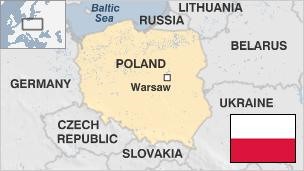Overview
Poland is located in Central Europe, covering an area of 312,696 square kilometres, bordered by 7 countries. Geographically beautiful country with open plains, forested regions, the Baltic sea to the north and high mountainous region to the south, with a largely temperate seasonal climate. Poland has a population of more than 38 million people, with the predominant language is Polish. Poland became a member of the European Union (EU) in 2004, just 5 years after joining Nato.
Socio-Economic Profile
Poland has made major economic strides over the last 30 years, and especially since joining the EU. Even during the credit crunch and world-wide economic crisis during 2008/9, when all the major European economies were contracting, Poland was the only country in Europe to that still experienced economic growth.
Poland has exhibited marked success in creating a thriving market economy and attracting substantial foreign investments.

Gdansk harbour
Over the last 15 years, the country has grown around 4% a year on average, which translated into more than three times the EU average growth rate; supporting the fact that Poland has steadily been catching up to Western Europe, becoming the 7th largest economy in the EU with a total GDP of €524 billion.
Poland is now ranked amongst the fastest-growing economies in Europe; with a reputation as being business-friendly country with largely sound macroeconomic policies.
Poland’s Purchasing Power Parity (PPP) has risen to $33,891; passing Portugal this year and within a decade is predicted to overtake Italy.
Even with a conservative baseline estimate, Poland’s economy is expected to grow by at least 3% a year, reaching a minimum GDP growth rate of €200 billion by 2030.
Poland’s sovereign credit ratings are as follows: Standard & Poor’s credit rating is at A- with stable outlook. Moody’s credit rating is at A2 with stable outlook, and Fitch’s credit rating is presently at A- with stable outlook.
Poland has a vibrant SME sector supported by a large domestic market, giving rise to growing number of successful businesses; leading to a booming investment climate, that attracts ever increasing numbers of both domestic and international entrepreneurs and business startups.
In 2019, Poland was visited by 21.4 million tourists, and experienced a growth of 8% in the number of foreign tourists; becoming the 18th most visited country in the world.
Brief Socio-Economic Profile – 2019

Warsaw – Modern Skyline
Population: 38 million
GDP (PPP): $1.1 trillion
GDP Growth: 4.6%
GDP 5-yearcompound annual growth: 3.2%
GDP per capita: $29,521
Unemployment Rate: 4.9%
Inflation Rate (CPI): 2.0%
Foreign Direct Investment (FDI) Inflow: $6.4 billion
Poland is ranked 23rd among 44 countries in the Europe region.
Poland part of the Visegrád Group – Group of 4 Nations

The Visegrád Group of 4 countries: Poland, Hungary, Czech Republic, and Slovakia, are uniquely positioned within the EU, in terms of:
– Fundamental Christian Civilization and Principles; Safe, Secure, low crime environment; Stable Society
– Open to Socio-Economic Development Initiatives; Support and Appreciation of Education; Rich Culture & Heritage; Strong Economic Growth and Prospects; Low Inflation and Low Unemployment
– Excellent Investment climate and Incentives
– More and more people in the region who can speak English (especially the youth), etc.
Socio-Economic Significance of this Visegrád Group:
* If this region was measured as a collective single state, the V4 would be the 5th largest-economy in Europe and rank 12th in the World!
* The combined population of 64 million would place it 22nd largest in the world and the 4th in Europe.
* Poland has the largest population in the V4 Grp (38 million), followed by the Czech Republic (11 million), Hungary (10 million) and Slovakia (5.5 million).


